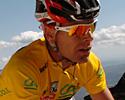
Recently on Cyclingnews.com |
Reviews
First impressions: Fi'zi:k Arione and Gobi saddles
Fi'zi:k Arione
By Chris Henry and Simon Hayes
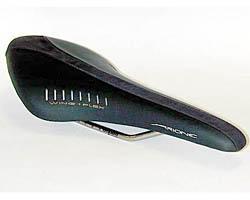 |
Fi'zi:k is generating a fair amount of buzz with its new Arione saddle and "Wing Flex" design, but the most striking feature of Arione when you pull it out of the box is its length. At 30cm, it is notably longer than most saddles, and Fi'zi:k claims the extra length provides 12 percent more contact surface area than standard saddles. All this in a 250g model that won't weigh down the bike more than necessary. The Arione was developed with the help and guidance of Gilberto Simoni, who rode it to victory in the 2003 Giro d'Italia.
The Arione's other major feature is what Fi'zi:k calls "Wing Flex", which the company says increases pedalling power and allows for more free thigh movement. The plastic shell is reinforced with carbon, designed to flex in the right places but not allow too much give.
To put the claims to the test, the two of us have been clocking some kilometres on a couple of Ariones. Initial reactions are generally positive, though with something as comfort-critical as a saddle, we will spend a bit more time before arriving at final conclusions.
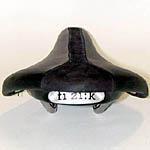 |
The saddle's distinctive looks are enhanced by soft, smooth Microtex panels on the outside with a brushed suede running down the middle. The cover is not affected by water and is completely washable.
Just as the entire saddle is longer than most, the rails allow for 85mm of adjustability. When setting up any new saddle it is important to use measurements from your previous model, but keep in mind that differences in saddle shape can affect positioning. Because of the unusual length of the Arione, a good starting point is the flare of the saddle in the middle, which dictates position more than the tip of the nose or the rear of the saddle. Positioning of the saddle may take some tweaking in the first few rides, but that's typically the case with new saddles, regardless of the model.
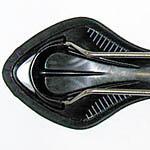 |
We both liked the saddle's extra length, particularly because there's a lot of saddle surface area at the rear, which you allows you to slide back for seated climbing and make other subtle shifts in position for more power or comfort throughout a ride. The extra saddle surface at the rear of the Arione is an immense help in remaining seated because you can move right back and bring those long leg muscles into play.
The padding under the Arione's cover feels very soft compared to some other models, but on the bike it is just right, absorbing shock and providing comfort without feeling like it gives too much. Under the centre suede stripe is in fact a softer area to relieve pressure on the perineum without a hole in the middle of the saddle. With well over 30 hours logged on the Arione already, the beginning of each ride is still a pleasant reminder of just how comfortable it is.
Look for a full review of the Arione in the coming weeks.
Recommended retail price: US$125
Fi'zi:k Gobi
By Paul Mitschin
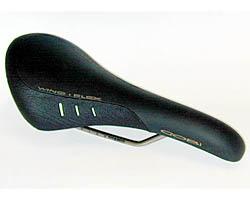 |
Although it hasn’t received as much attention as the road-born Arione, the mountain bike-developed Gobi is no less of a saddle. According to Fi'zi:k, forty professional and enthusiast riders were involved in the Gobi's design and development process including Siemens-Cannondale cross-country racer Christophe Sauser and downhiller Cedric Gracia, who both won on development Gobis this year.
With a slightly curvier shape, the Gobi has the same "Wing Flex" design as the Arione, as well as the new "Tail flex", so you could be forgiven for thinking the Gobi will feel mushy when seated.
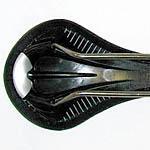 |
Positioning the Gobi for first use required a bit of fiddling, as I found I needed to sit a little further back than usual to really get the most comfortable position; or move the saddle slightly forward, depending on how you look at it. The two "flex" systems mean that the saddle does move slightly under you while pedalling, but this actually makes for a better-feeling saddle; the movement is not sloppy at all.
The smooth Microtex panels provide a good amount of grip without stopping you from moving about for climbs and descents. The layer of padding is just about perfect in relation to the flex on the wings and tail; you don’t notice where one starts and the other ends.
Although it is still early in the review process, the Gobi already heads the list of my favourite saddles. It is just as comfortable a few hours into a ride as it is at the beginning.
Look for a full review of the Gobi in the coming weeks.
Recommended retail price: US$125
